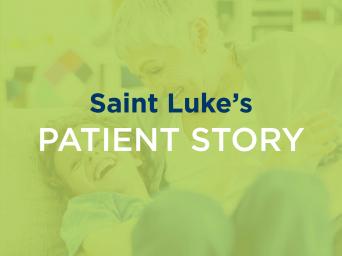Interventional Cardiology
Saint Luke's Health System cardiologists performed the world's first balloon angioplasty in an acute heart attack patient in 1981. Since then, we've developed many new treatments for improving coronary and vascular circulation and have pioneered catheter-based treatments for structural heart disease.
- We offer the region’s only treatment option for cardiac patients considered too high-risk or inoperable for conventional aortic valve replacement surgery.
- We’re a world leader in treating chronic total occlusions (CTOs), or arteries that are completely blocked by plaque buildup.
- We’ve been a lead enroller in the Protect AF trial, which helps patients who are at risk for embolism but aren't candidates for anticoagulants.
- We participated in the first international collaborative study using stem cells in interventional cardiology.
Saint Luke's Interventional Cardiology Program:
- Is a subspecialty of cardiology that uses catheters and other devices to restore blood flow to the heart instead of major surgery
- Has become one of the world's largest programs specializing in interventional cardiology
- Is a leader in pioneering safer, more effective interventional treatment
The Heart Institute has a long history of internationally-recognized expertise in interventional cardiology. Our cardiologists excel in improving coronary and vascular circulation, as well as using catheter-based treatments for structural heart disease.
Since the first cardiac laboratory opened in 1961, the Heart Institute’s Interventional Cardiology Program has evolved into one of the world’s largest.
Our team is regionally and nationally renowned for innovative treatment and excellent clinical outcomes.
Our interventional cardiology services include:
- Ablation
- Acute infarct (heart attack) angioplasty
- Angioplasty (PTCA)
- Brachytherapy
- Coronary stent placement
- Fractional flow reserve-guided, or FFR-guided, percutaneous coronary intervention (PCI)
- Internal defibrillator implantation
- Intracoronary radiation
- Peripheral ablation for PVD/PAD
- PCI for chronic total occlusions
- Peripheral stent placement
- Rotoblator
- Structural repair, such as for closing ASD, PFO, or paravalvular leak
- Transcatheter aortic valve replacement (TAVR) for stenosed aortic valves
- Transradial catheterization
- Valvuloplasty for stenosed aortic or mitral valve
Chronic Total Occlusions
Chronic total occlusions—also called CTOs or completely blocked arteries—affect one in six heart patients. We’re a pioneer in developing minimally-invasive angioplasty techniques to successfully treat CTOs. In fact, our interventional cardiology team has:
- Performed more than 2,000 CTO procedures, averaging a 90 percent success rate—exceeding the 65 percent national average
- Decreased average procedural times in half, from 180 to 90 minutes
- Trained physicians in 120 facilities worldwide
- Served in advisory and leadership roles for the leading interventional cardiology organizations
- Completed seminal research on the benefits and clinical outcomes of CTO angioplasty
It’s all too common that patients are told that nothing can be done when percutaneous coronary intervention (PCI) would predictably provide benefits including symptom relief, improved left ventricle function, and for some, the potential for a survival benefit. Our goal at the Heart Institute is to afford every patient access to the right procedure for the right indication every time.
- CTOs at Saint Luke’s are approached by a team of four interventionalists with advanced training.
- Annually, we perform between 150 and 180 CTO PCI procedures and maintain a success rate greater than 85 percent.
- Patients are carefully chosen based on their symptoms, risks, and response to medical therapy using the American College of Cardiology and American Heart Association standards and protocols scale for determining eligibility for the procedure.
- Our rate of “rarely appropriate” PCI in this population is one percent, well below national average of seven to eight percent for elective PCI.
Saint Luke’s interventional cardiology team uses a hybrid treatment approach to quickly and safely adapt to ensure the best patient outcome:
- Antegrade wire escalation—Doctors use a catheter and specially-designed wires to reach the blood vessel near the CTO. A balloon opens the occlusion and stents help keep it open.
- Antegrade dissection and re-entry—The catheter passes around the CTO and enters through the side wall of vessel. Once stents are in place, doctors use a specially-designed balloon to create a new blood vessel.
- Retrograde approach—Doctors approach the CTO backward by working through tiny collateral blood vessels. They use balloons and stents to open the occlusion.
Patients with CTOs often experience chest pain, shortness of breath, and fatigue. However, CTO angioplasty can greatly reduce these symptoms and improve patients’ quality of life.
Saint Luke’s research shows that patients report an average 20-point improvement in quality of life scores. This is a dramatic achievement, considering a five-point improvement is deemed clinically meaningful.
Contact Us
To schedule a consultation, call 816-931-1883.
